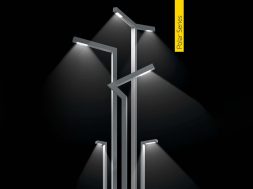Elevating passenger experience in airports

Discussing how advanced escalators and moving walkways can elevate status of an airport.
Mumbai, Delhi and Hyderabad airports in India are classic cases of state-of-the-art infrastructure when it comes to the convenience of travellers. Airports use moving walkways to move passengers with heavy luggage, from increasingly long distances between the terminals or to parking and transport stations. Escalators have been moving passengers between levels of airport terminals, train stations, subway stations, and other public transport and urban areas around the world for decades.
Advanced moving walks at airports give convenience, comfort and safety a whole new meaning. Whether you’re pushing a stroller, a heavy baggage or shopping cart, these mobility solutions readily shorten long stretches in airports. Architects and contractors also enjoy greater freedom in designing public infrastructure thanks to today’s innovative moving walks.
Advanced moving walks
Thyssenkrupp has the extensive experience and expertise to provide the right moving walks, skilfully adapted to your specific needs and structure, says Bharat Vishnani, Managing Director, Thyssenkrupp Elevator (India) Pvt Ltd. He explains a few of the benefits one gets with Thyssenkrupp’s advanced moving walks:
• Easy installation and integration into buildings
• Modular design for greater flexibility
• Long-lasting, reliable, smooth operation
• Increased safety and comfort for riding with carts and strollers
• Fewer components, less material and lighter weight.
Heavy-duty escalators with advanced design features
Escalators at airports are equipped with advanced technology, such as power saving features and safety features which ensure low noise, reliability, longer product life, low operating costs and enhanced safety.
Thyssenkrupp offers heavy-duty escalators with more design features for modern airports, including under-handrail lighting, stainless steel or custom powder-coated finishes, informs Vishnani. He adds, “All our models combine attractive design with the latest escalator technology for increased comfort and safety, available for both indoor and outdoor applications. Whether with a glass or metal balustrade, the heavy-duty models are made to direct the traffic of tomorrow. Economical, robust and featuring advanced technology, our heavy-duty line is designed specifically to suit your needs.”
Travelators can be a relief for tired travellers!
For national and international airports that are huge, a moving walkway becomes mandatory, observes Kulvinder Singh Bansal, Director, Sophus Elevators. “The average walking distance from the hangar to the nearest immigration counter at any of the big international airports like Mumbai, Delhi or Hyderabad is a couple of kilometres. The weary traveller after having gone through a tiring journey would definitely not want to take a walk with his hand baggage.”
Travelators were introduced exactly to address this issue a few years back. Indian airports that serve as transit hub for many flights from South-East Asia flying to Europe and beyond have these travelators installed to enhance customer experience at the airports and also reduce the trouble involved in transiting from one flight to another.
“Travelators can be a relief for tired travellers, for those who can’t walk long distances and anyone with a short connection on the other side of the airport. No matter what you choose to call it, a moving walkway is a simple variation of the conveyor belt,” explains Bansal.
While moving walkways and escalators are designed to get passengers in airports from here to there, there’s no rule that says the journey must be boring. “Placing artwork along airport moving walkways can transform an otherwise long, often lacklustre connector into a positive visual experience,” adds Bansal.
‘Green’ Elevators for ‘Green’ Airports
Otis products are installed at some of the world’s busiest airports, including the international terminal at Los Angeles International Airport (LAX) in the United States, Incheon International Airport in South Korea and Athens International Airport in Greece. Last year, Otis announced that it would provide nearly 100 elevators for the airport and associated rail transport for the Guangzhou Baiyun International Airport in China.
Most infrastructure projects, including airports, aim for environmental sustainability and Otis offers just that in its escalators, moving walkways and elevators.
Airports have also turned to Otis’s flagship product, the Gen2 elevator. “The Gen2 range is designed to increase the elevator’s efficiency, safety and reliability with key components that include a coated steel belt, as well as the ReGen drive, permanent magnet machine and PULSE monitoring system,” describes Sebi Joseph, President, Otis India.
He further claims, “Gen2 elevators with ReGen drives are as much as 75 per cent more energy efficient than traditional elevators with conventional drives. This helps achieve substantial energy savings and can help support green building certification.”
Space-saving elevators
The Gen2 range also has machine-room less (MRL) elevators. These elevators replace large elevator rooms by locating a compact hoisting machine on the top of the elevator shaft. Compared to systems with machine rooms, the compact gearless machine consumes less electricity and saves on other building costs because it does not take up an entire room for parts and equipment.
Managing elevators effectively
In order to help effectively manage all the elevators at an airport, Otis offers the Web-based EMS Panorama system that enables building staff to monitor, control and report on a full range of operation-critical functions for an elevator and escalator from any computer with an internet connection. The EMS Panorama system offers comprehensive, real-time data that shows building managers the full picture, enabling them to respond quickly to passengers’ needs and make informed decisions about equipment operations.
Advanced solutions to elevate airport status
ACCEL: Highly effective moving sidewalk
ACCEL, the unique accelerating moving walkway from Thyssenkrupp offers high capacities and high speeds for short distances, with no waiting times for passengers and low implementation costs. Passengers step onto the ACCEL at normal walking speeds, accelerate smoothly up to 7.2 km/h, or even 12 km/h for passengers who continue walking on the pallet band, and then decelerate to normal speed when leaving the system.
ACCEL also benefits airport operators looking to improve transit times between gates or between distant parking bays and the airport. With no waiting times or barrier gates, passengers need only 140 seconds to cover a distance of 270 metres, instead of the earlier 415 seconds, resulting in an impressive time saving of 70 per cent. For airport operators, it eliminates the need and high costs associated with providing buses, automated people movers, or sky-trains for distances of up to 1.5 km.
Furthermore, Thyssenkrupp recently launched MAX, a game-changing predictive and pre-emptive maintenance solution that extends remote monitoring capabilities to dramatically increase current availability levels of existing and new elevators. Utilising the power of Microsoft Azure Internet of Things (IoT) technology, MAX predicts maintenance issues before they occur, and empowers elevator engineers by flagging the need to replace components and systems before the end of their lifecycle.
Escalators & Travelators by FUJI-Sophus
Escalators are big, bulky and expensive installations, and the level of engineering precision and manufacturing standards required to make them work reliably day in and day out is nothing short of phenomenal. These conveyance devices are such an integral part of the daily lives of millions all over the world, they’re simply taken for granted on a mass scale.
Faster and more efficient walkways
While moving walkways are still essentially conveyor belts for people, FUJI-Sophus have made many design and safety improvements to the concept over the years. FUJI-Sophus offers 2 variants: Sukushi – The Commercial Version and Kanji – The Heavy Duty Version.
The company provides energy-saving moving walkways that slow down when there are no users but accelerate to full speed when users approach. To ensure your escalators are running at optimum energy levels without sacrificing a hint of service or performance, FUJI-Sophus has developed three eco operation modes to save power without sacrificing performance and service. Also Variable Frequency Energy Saving system, Auto Start System, Step missing detection sensors are few of the advanced features offered by FUJI-Sophus.
Looking to the future, FUJI-Sophus has developed a high speed and high capacity moving walkway – called MYUTO – that uses maglev technology. The model has a belt that begins at normal walking speeds and then accelerates up to 7.5 mph at its top speed.
Otis is also planning to launch a new product in the near future. However, Joseph refuses to provide further details.
Cookie Consent
We use cookies to personalize your experience. By continuing to visit this website you agree to our Terms & Conditions, Privacy Policy and Cookie Policy.









